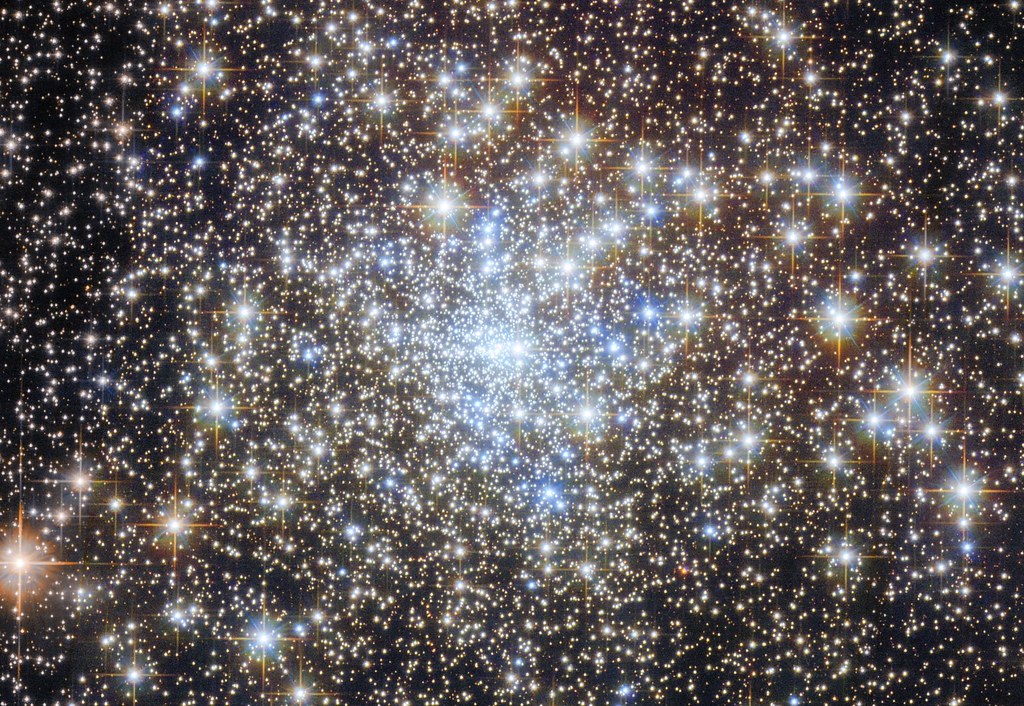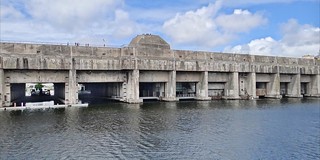NGC 6325: the photo of a huge cluster of stars that has a 'hidden monster'
The universe has dimensions that exceed the human mind, and in it there are innumerable mysteries waiting to be discovered.
One of those mysteries is found in NGC 6325, a globular cluster of stars 26,000 light-years from Earth and located in the constellation Ophiuchus. This concentration of billions of stars was discovered by British astronomer John Herschel in 1835. It is one of only 150 known globular clusters, but there could be many more throughout the universe. About these clusters, the European Space Agency (ESA) explains the following:
"They can be found in all types of galaxies, and act as natural laboratories for astronomers studying star formation. This is because the constituent stars of globular clusters tend to form at roughly the same time and with similar initial composition, meaning that astronomers can use them to fine-tune their theories of how stars evolve."
This Friday, ESA released a spectacular photo of NGC 6325 taken by the Hubble Space Telescope, launched in 1990 and capturing these images from an orbit outside the Earth's atmosphere. You can see the full photo below these lines (click on the image to see it enlarged).
The nucleus of this globular cluster is what you can see in the following magnification. It is there where the greatest number of stars and the largest ones are concentrated. As one gets further from the core, the stars that can be observed are smaller and more distant from each other.
ESA has a special interest in NGC 6325, which it explains in the following words: "Astronomers inspected this particular cluster not to understand star formation, but to search for a hidden monster. Though it might look peaceful, astronomers suspect this cluster could contain an intermediate-mass black hole that is subtly affecting the motion of surrounding stars. Previous research found that the distribution of stars in some highly concentrated globular clusters — those with stars packed relatively tightly together — was slightly different from what astronomers expected."
The ESA adds that this discrepancy "suggested that at least some of these densely packed globular clusters — including perhaps NGC 6325 — could have a black hole lurking at the centre. To explore this hypothesis further, astronomers turned to Hubble’s Wide Field Camera 3 to observe a larger sample of densely populated globular clusters, which included this star-studded image of NGC 6325. Additional data from Hubble’s Advanced Camera for Surveys were also incorporated into this image."
Let's keep in mind that photographing a black hole is something extremely difficult, due to its very essence: having a gravitational field so strong that it attracts even light, black holes are invisible and can The most we can capture is the light that surrounds them before being swallowed by them. Remember that the first photo of a black hole was made in 2019 by the Event Horizon Telescope. The protagonist of the photo was M87, a supermassive black hole, that is, with a mass ranging from millions to tens of billions of solar masses. Being an intermediate-mass black hole, NGC 6325's would be smaller: between 100 and a million solar masses, making it even more difficult to photograph.
|
Don't miss the news and content that interest you. Receive the free daily newsletter in your email: Click here to subscribe |
- Lo más leído
- A large collection of Volkswagen cars hidden in an abandoned mine in Switzerland
- A British fairytale ruin: the abandoned shoe house on the Isle of Wight
- Sabbione: a beautiful Swiss town that looks like something out of 'The Lord of the Rings'
- CRC Glons: exploring a NATO radar station that was abandoned in 2021
- The Maid of Harlech: the P-38 fighter that was buried on a beach for 65 years
- An old Soviet military plane abandoned from 1971 on a Russian island near Alaska
- The supermassive black hole of Phoenix A, the biggest known light-devouring monster

 ES
ES







Opina sobre esta entrada: